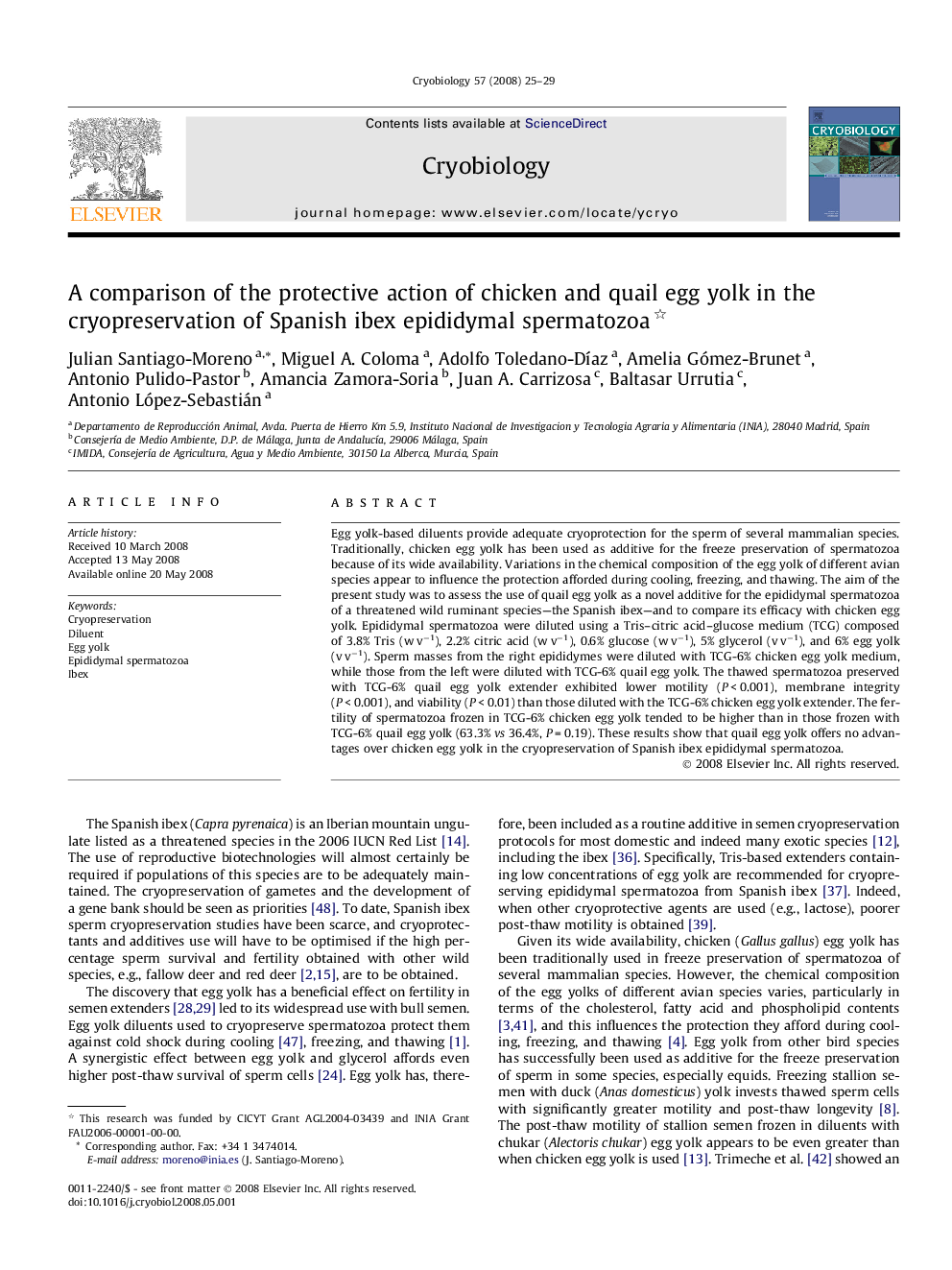| Article ID | Journal | Published Year | Pages | File Type |
|---|---|---|---|---|
| 2169291 | Cryobiology | 2008 | 5 Pages |
Egg yolk-based diluents provide adequate cryoprotection for the sperm of several mammalian species. Traditionally, chicken egg yolk has been used as additive for the freeze preservation of spermatozoa because of its wide availability. Variations in the chemical composition of the egg yolk of different avian species appear to influence the protection afforded during cooling, freezing, and thawing. The aim of the present study was to assess the use of quail egg yolk as a novel additive for the epididymal spermatozoa of a threatened wild ruminant species—the Spanish ibex—and to compare its efficacy with chicken egg yolk. Epididymal spermatozoa were diluted using a Tris–citric acid–glucose medium (TCG) composed of 3.8% Tris (w v−1), 2.2% citric acid (w v−1), 0.6% glucose (w v−1), 5% glycerol (v v−1), and 6% egg yolk (v v−1). Sperm masses from the right epididymes were diluted with TCG-6% chicken egg yolk medium, while those from the left were diluted with TCG-6% quail egg yolk. The thawed spermatozoa preserved with TCG-6% quail egg yolk extender exhibited lower motility (P < 0.001), membrane integrity (P < 0.001), and viability (P < 0.01) than those diluted with the TCG-6% chicken egg yolk extender. The fertility of spermatozoa frozen in TCG-6% chicken egg yolk tended to be higher than in those frozen with TCG-6% quail egg yolk (63.3% vs 36.4%, P = 0.19). These results show that quail egg yolk offers no advantages over chicken egg yolk in the cryopreservation of Spanish ibex epididymal spermatozoa.
